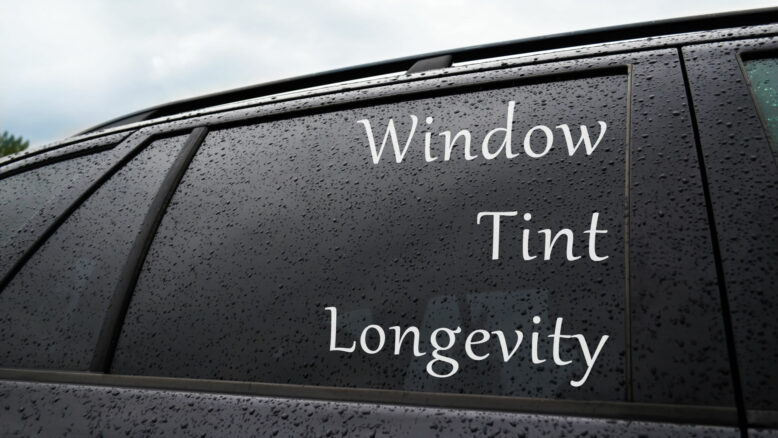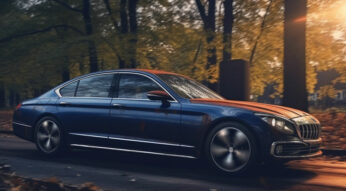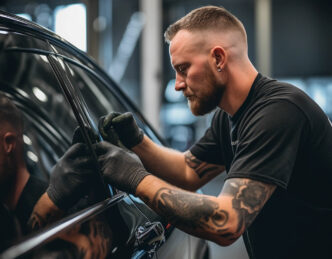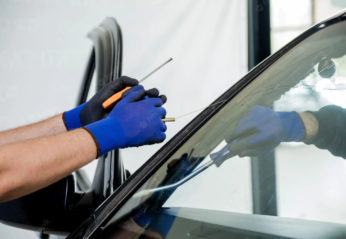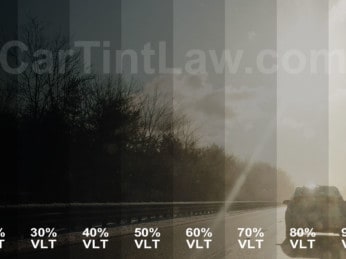Window tinting is a popular and practical enhancement that offers numerous benefits. From reducing glare and protecting your vehicle’s interior, to providing privacy and improving the aesthetics of your car, tinting your windows has become a common choice for drivers worldwide. However, one crucial aspect that often goes overlooked is the longevity of car window tint.
Understanding how long car tint lasts is of paramount importance for any vehicle owner. The lifespan of your tint not only impacts its performance, but also determines how well it continues to serve its intended purposes.
In this comprehensive guide, we will delve into the various factors that influence the durability of car window tint, the signs of deterioration to watch out for, and essential maintenance tips to ensure your investment endures.
Table of contents:
- What affects tint longevity?
- What’s the average lifespan of car tint?
- Signs of deterioration
- Maintenance tips
- Diy vs. professional installation
- Replacing old tint
- Final thoughts
What affects tint longevity?
The longevity of car window tint is influenced by a combination of factors that can significantly impact how well it stands the test of time.
To ensure your tint retains its effectiveness and aesthetic appeal, it’s essential to understand these key factors:
- Quality of Installation: The initial installation of your car window tint plays a pivotal role in determining its longevity. Professional installation by experienced technicians who use high-quality materials and proper techniques can make a substantial difference. Inferior installation may result in bubbling, peeling, or premature fading.
- Tint Film Type: Different types of tint films, such as dyed, metalized, ceramic, and carbon, have varying levels of durability. Carbon and ceramic tints, for example, are known for their long-lasting properties, as they resist fading and discoloration better than dyed or metalized tints.
- Tint Quality: The quality of the tint film itself is paramount. High-quality films are designed to resist fading, peeling, and discoloration, making them a more durable option. Investing in premium-grade tint can pay off in the long run, as it’s less prone to deterioration.
- Exposure to UV Rays: Prolonged exposure to ultraviolet (UV) rays from the sun is one of the most significant factors affecting tint longevity. Over time, UV rays can break down the adhesive used in the tint film, causing it to deteriorate and lose its effectiveness. Choosing tint films with high UV resistance can mitigate this issue.
- Climate and Weather Conditions: The climate and weather conditions in your region can impact how long your car window tint lasts. Extreme heat, harsh winters, and frequent exposure to rain or snow can accelerate wear and tear. Tints that are designed to better withstand the specific weather conditions in your area may be a wise choice.
- Maintenance: Proper care and maintenance are essential for prolonging the life of your tint. Regular cleaning with mild, ammonia-free solutions and avoiding abrasive materials when cleaning can prevent scratching and preserve the tint’s appearance.
- Tint Darkness: Darker window tints tend to absorb more heat, which can lead to quicker deterioration. It’s important to strike a balance between the desired shade level and heat absorption, considering the climate in your area.
- Adhesive Quality: The adhesive used to bond the tint to your windows plays a critical role in its longevity. High-quality adhesives are more resilient against wear and tear, ensuring the tint remains securely in place.
Understanding these factors is crucial for making informed decisions when selecting and maintaining your car window tint. In the following sections, we will delve deeper into signs of tint deterioration and maintenance practices to help you extend the life of your tint.
What’s the average lifespan of car tint?
The lifespan of car window tint can vary widely depending on multiple factors, including the quality of the tint, the type of tint, and how well it’s maintained. On average, most car window tint is expected to last between 5 to 10 years. However, keep in mind that this is a general estimate, and the actual durability may deviate from this range.
Average durability of tint film type:
- Basic dyed film: 2-5 years
- Metalized film: 3-7 years
- Carbon film: 5-10 years
- Ceramic film: 10-20 years
Some manufacturers may offer warranties that specify the expected lifespan of their tints. These warranties can range from 5 years to a lifetime, depending on the tint’s quality. Be sure to inquire about any warranties when getting your car’s windows tinted to have a better idea of what to expect in terms of longevity.
Signs of tint deterioration
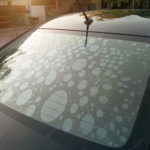 Recognizing the signs of window tint deterioration is crucial for maintaining both the appearance and functionality of your tint. Here are some common indicators that it may be time to consider removing your old window tint and replacing it with new:
Recognizing the signs of window tint deterioration is crucial for maintaining both the appearance and functionality of your tint. Here are some common indicators that it may be time to consider removing your old window tint and replacing it with new:
- Bubbling and Peeling: One of the most evident signs of deteriorating tint is the development of bubbles and peeling along the edges or within the film itself. Bubbling can occur when the adhesive holding the tint in place weakens or when the film is damaged. Learn how to remove tint bubbles.
- Fading and Discoloration: Over time, exposure to sunlight can cause window tint to fade or change color. If your tint appears significantly lighter or has taken on a purple or blue hue, it’s a clear sign of fading and deterioration.
- Cracking or Scratching: Scratches or cracks on the tint film can compromise its effectiveness and aesthetics. These imperfections can occur due to physical damage, harsh cleaning, or wear and tear.
- Hazy or Cloudy Appearance: Tint that has become hazy or cloudy may obstruct your visibility and reduce the film’s ability to block UV rays. This can be caused by exposure to UV radiation and the breakdown of the tint material.
- Decreased Heat and Glare Reduction: If you notice that your tint is no longer as effective at reducing heat or glare, it may be deteriorating. Reduced performance in blocking sunlight can indicate that the tint is no longer functioning optimally.
- Adhesive Failure: When the adhesive holding the tint to your windows fails, the film can start to detach or sag. Adhesive failure is a clear sign that the tint is in poor condition.
If you observe any of these signs, it’s advisable to consult a professional tint specialist to assess whether your window tint needs replacement. Timely replacement can help maintain the aesthetics and performance of your window tint, ensuring that it continues to serve its purpose effectively.
Do not forget that some states even make it illegal to drive with any discolored or bubbled tint. It can decrease your clear view of the road, which is by state law a punishable offense. This typically refers to tint on front windshields, but in some states side windows are included.
Maintenance tips
Proper maintenance plays a significant role in extending the lifespan of your vehicle tint. By following these maintenance tips, you can help ensure that your tint stays in great condition for years to come.
- Gentle Cleaning: When cleaning your tinted windows, use a soft, non-abrasive cloth and a mild, ammonia-free cleaning solution. Avoid harsh chemicals or abrasive materials, as they can scratch or damage the tint film. Gently wipe the tinted surface to remove dust and smudges. See: How to clean tinted windows without chemicals.
- Regular Cleaning Schedule: Establish a routine for cleaning your tinted windows. Regular cleaning helps prevent the buildup of dirt and contaminants, maintaining the tint’s clarity and appearance. Aim for monthly cleaning or as needed, depending on your driving conditions.
- Be Mindful of Sharp Objects: Avoid using sharp or abrasive objects near the window tint. Careless use of sharp tools or accessories can lead to accidental scratches or damage.
- Protective Coating: Consider applying a specialized tint-safe protective coating. Some products on the market can add an extra layer of protection to your window tint, making it more resistant to scratching and UV damage.
- Tint-Friendly Sunshades: Invest in sunshades and covers for your car’s windshield and side windows. These sunshades provide additional protection from direct sunlight, reducing the heat and UV exposure that can deteriorate your tint over time.
- Regular Inspection: Periodically inspect your window tint for any signs of deterioration, such as bubbling, peeling, or discoloration. Early detection can lead to timely maintenance or replacement, preserving the integrity of your tint.
- Professional Care: When in doubt or if you notice significant issues with your window tint, consult a professional tint specialist. They can assess the condition of your tint and recommend the appropriate maintenance or replacement actions.
By following these essential maintenance tips, you can help ensure that your car’s window tint remains in excellent condition, providing you with the benefits of enhanced privacy, UV protection, and glare reduction for an extended period.
DIY vs. professional installation
The method of installation can significantly impact the longevity of your tint. Let’s explore the differences between DIY (Do-It-Yourself) and professional installations, and why the choice you make can affect the lifespan of your window tint.
DIY installation
DIY window tint kits are available for those who prefer a hands-on approach. While DIY installations may be cost-effective, there are several factors to consider:
- Skill Level: Installing window tint requires skill and precision. If you’re not experienced, you may struggle with achieving a smooth, bubble-free application, which can affect the tint’s lifespan and appearance.
- Quality Control: DIY kits vary in quality, and some may use lower-grade materials. The quality of the tint film itself can influence how well it stands up to time and environmental factors.
- Warranty Implications: DIY installations might void the warranty of some high-quality tint films. It’s essential to check the manufacturer’s warranty and guidelines before attempting a DIY installation.
Always choose professional installation if you do not have the time, patience or attention to detail.
Professional installation
Professional installation offers several advantages:
- Expertise: Tint specialists have the experience and training to ensure a precise and bubble-free application. They can select the right tint film for your needs and vehicle type, considering factors like climate and UV exposure.
- Quality Materials: Professionals typically use high-quality tint films that are known for their durability and longevity. These films are less likely to fade, peel, or bubble over time.
- Warranty Protection: Many professional installations come with warranties that cover the tint material and labor. This added protection can offer peace of mind and assurance of the tint’s lifespan.
DIY installations can be a budget-friendly option, but they may not provide the same level of quality, longevity, and warranty protection as professional installations. Choosing professional installation increases the likelihood of enjoying your window tint’s benefits for an extended period without issues. When longevity is a priority, professional installation is often the preferred choice.
Replacing old tint
Over time, even the best vehicle window tint will eventually show signs of wear and deterioration. When your window tint becomes old, damaged, or you simply wish to update it, it’s important to understand the process of replacement, and why professional removal is often the best approach.
Replacing old or damaged window tint involves the following steps:
- Assessment: Begin by assessing the condition of your existing tint. Look for signs of bubbling, peeling, discoloration, or any damage. This evaluation will help you determine if replacement is necessary.
- Choosing New Tint: If you decide to replace your old tint, select the type and shade of tint you want. Consider the benefits of different tint materials, such as dyed, metalized, carbon, or ceramic, and choose the one that suits your preferences and needs.
- Professional Removal: When it comes to removing old tint, professional removal is highly recommended. Tint removal can be a delicate process, and attempting to do it yourself can lead to damage to the glass or difficulties in removing adhesive residue.
When it’s time to replace old or damaged window tint, the process should begin with a thorough assessment. Removing old and applying new tint can be a costly and time-consuming process, but it will be inevitable sooner or later.
Final thoughts
Window tint is an investment that adds value to your vehicle. By understanding the factors that affect its longevity and taking the right steps to maintain and replace it when necessary, you can enjoy the benefits of tinted windows for years to come.
When selecting the ideal tint for your specific needs, consider your climate, style preferences, and local regulations, ensuring that your choice perfectly complements your vehicle and lifestyle. Whether it’s the sleek look of dyed tint or the top-tier performance of ceramic, your decision will play a significant role in how long your car window tint lasts and how well it serves you.
To avoid being hustled by your local tint business, see our Window film types article to find out the pros and cons of each one. Depending on your needs, you may not always need the most expensive film.

